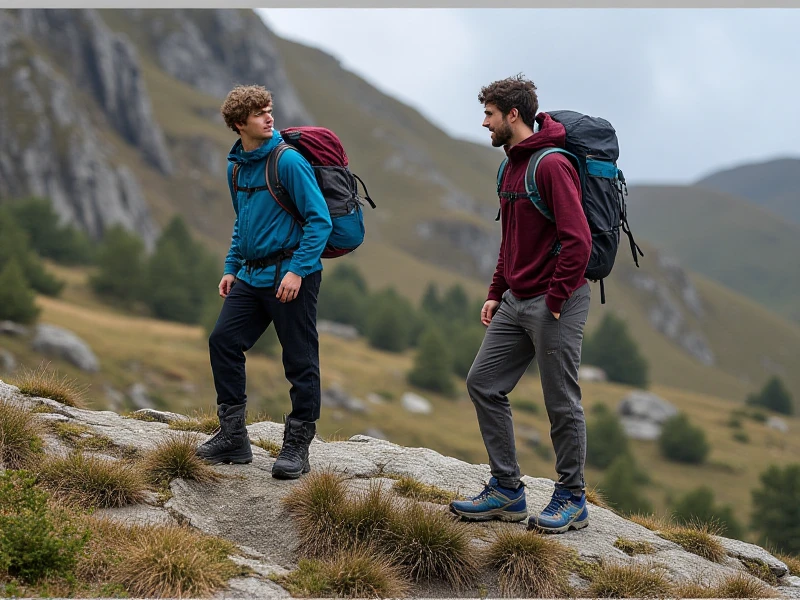Find Your Perfect Fit: Choosing the Best Women's Hiking Shoes for Your Adventures
2025-06-06

Here is an 800-word SEO-optimized article about women's hiking shoes, written naturally without AI identifiers:
Hitting the trail? Choosing the right footwear is absolutely critical for comfort, safety, and enjoyment. Women's hiking shoes aren't just smaller versions of men's boots; they cater to the specific biomechanics, foot shape, and preferences of active women. With so many options on the market, navigating the world of hiking boots and shoes specifically designed for women can feel overwhelming. Fear not! This guide cuts through the noise to help you find the ideal pair of women's hiking shoes for your next adventure.
Why Women's Hiking Shoes Matter
Feet are not one-size-fits-all. Women generally have narrower heels relative to the forefoot compared to men. The arch contour is often positioned differently, and the mid-foot volume tends to be lower. Women's hiking shoes address these anatomical differences. They typically feature:
Narrower Heel Cups: Prevents heel slippage and blisters.
Scooter Heels: A design shaping the heel counter to align better with the female Achilles tendon angle.
Higher Instep Volume: Accommodates the higher volume often found in women's feet without unwanted pressure points.
Women-Specific Midsole Designs: Targeted cushioning, flex points, and arch support optimized for lighter average weights and biomechanics.
Gender-Specific Lasts: The 'mold' on which the shoe is built reflects the shape of the female foot.
Choosing a model specifically designed as women's hiking shoes means significantly reducing the break-in period and maximizing comfort and support right from step one.
Key Features to Consider
Your perfect hiking shoe depends heavily on the terrain, distance, pack weight, and your personal physiology. Consider these essential factors:
1. Support Level:
Day Hiking Shoes (Low-Cut): Ideal for lighter packs, well-maintained trails, and shorter distances. They offer maximum flexibility and lighter weight, resembling sturdy trail runners. Great entry-level women's hiking shoes.
Hiking Boots (Mid-High Cut): Provide more ankle support on uneven terrain, with heavier packs, or for carrying minor loads like children. Excellent for moderate trails and distance hikers seeking stability on more technical paths.
Mountaineering/Backpacking Boots (High-Cut): Maximum ankle support, stiffness, and durability for multi-day backpacking with heavy loads, rough terrain, and demanding ascents. Consider these for challenging routes or mountaineering ventures.
2. Waterproofing (GORE-TEX, eVent, etc.):
Pros: Keeps feet dry in wet grass, mud, snow, and during stream crossings. Adds windproof warmth.
Cons: Can make feet sweat slightly more in very hot weather, takes longer to dry if submerged. Crucial for consistently wet environments or cooler seasons.
Non-Waterproof/Breathable: More comfortable in hot, dry conditions. Dries quickly if wet. Ideal for summer day hiking in predictable weather.
3. Upper Material:
Nubuck Leather: Durable, supportive, molds well over time. Naturally water-resistant. Heavier.
Synthetic (Mesh & PU): Lighter weight, dries much faster, often more breathable. Requires less break-in. Good for day hiking shoes.
Mixed Materials: Offering a balance of support, weight, breathability, and water resistance. Very popular.
4. Outsole & Tread (Vibram, proprietary):
Lug Depth & Pattern: Deeper, more aggressive lugs provide superior grip in mud and loose terrain. Shallow lugs are fine for packed dirt and smooth trails. Look for multidirectional patterns that grip both ascending and descending. Vibram is renowned for excellent traction compounds.
Stiffness: Stiffer soles are better for rough, rocky terrain and carrying loads. Softer soles feel more like trail runners and excel on smooth paths.
5. Cushioning & Midsole Technology: Varies between brands and models. Provides shock absorption and comfort. Some prioritize maximum cushioning for comfort, others offer a firmer, more responsive feel necessary for technical trails.
6. Fit & Sizing: This is non-negotiable! Feet swell during hiking. Allow about a thumbnail's width (around 1/2 inch) of space between your longest toe and the end of the shoe. Do your size test in the afternoon with the type of hiking socks you'll wear. Ensure a snug fit in the heel with no slippage and enough room to wiggle toes comfortably. Different brands fit differently – always prioritize fit over a specific brand name. Women's hiking shoes from one brand might fit you perfectly, another might run too narrow or too wide.
Top Tips for Fit & Break-In
Shop in Person: If possible, always try boots on before buying.
Bring Your Socks: Wear the exact socks you hike in.
Walk and Simulate: Walk around the store. Use an incline board if available (or stand on the edge of a step) to see if your toes jam forward when going downhill. Push back with your foot to mimic ascending.
Break Them In: Never embark on a long hike in brand-new women's hiking shoes. Walk around town, do several shorter hikes of increasing distance to let the materials mold to your feet and soften.
Popular Brands for Women's Hiking Shoes
Brands consistently known for excellent dedicated models include:
Salomon: Renowned for exceptional fit, lightness, and innovative designs.
Merrell: Wide range, known for comfortable fits right out of the box, sturdy construction.
Keene: Excellent non-waterproof sandals and boots, famous for their protective toe bumpers.
Vasque: Heritage brand with a reputation for support and durability.
Oboz: Features excellent arch support (True To LastTM) and stable platforms.
Lowa: Premium brand known for durability, support, and fit (often uses specialized last designs).
Columbia: Offers reliable performance often at accessible prices.
Adidas Terrex: Blends athletic performance features with outdoor durability.
Invest in Your Footprint
The right pair of women's hiking shoes is an investment in comfort and adventure. They are foundational gear – protecting your feet and joints while translating directly to how much you enjoy the journey. Take the time to assess your needs, prioritize fit above all else, and embrace the trail with confidence! Lace up your perfect pair and discover the freedom of the outdoors supported every step of the way.
Category: